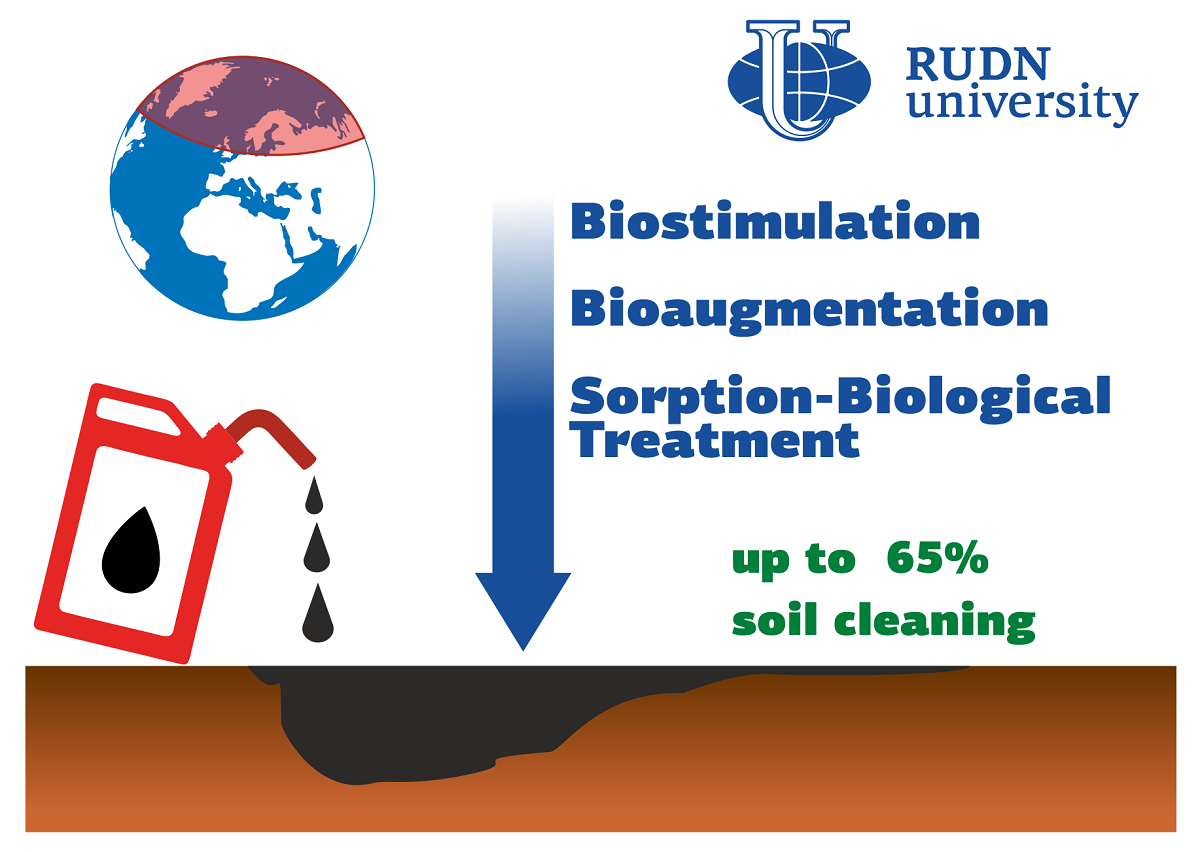Biologists Propose the Most Effective Method to Clean the Northern Soils from Petroleum Products

Oil and petroleum products contaminate the soil and water reservoirs not only where they are extracted and processed, but also during storage and transportation. Oil depots, large industrial enterprises, and even gas stations are becoming potential sources of pollution. Soil contaminated with petroleum products degrades rapidly. Microorganisms living in it die, its physical and chemical properties deteriorate, it loses its ability to self-heal. The most environmentally friendly way to restore polluted soils is bioremediation when petroleum products are decomposed by microorganisms. RUDN University biologists together with colleagues from the Kola and Pushchinsky scientific centers compared the effectiveness of various bioremediation methods for cleaning the soils of the Murmansk region (Russia).
“The most common bioremediation methods are biostimulation, which is based on the addition of extra sources of carbon and nutrients to stimulate microbial activity, and bioaugmentation—the introduction of cultures of petroleum-oxidizing microorganisms. The use of the bioremediation method does not always give good results, especially in arctic and subarctic conditions. This is due to the low biological activity of the soils of the northern regions of Russia and the high vulnerability of the natural ecosystems. The solution to this problem could be the technology of sorption-biological soil treatment based on the use of various sorbents. For example, activated carbon and peat can serve as a source of nitrogen and phosphorus and a place of localization of microorganisms-destructors, and they increase the moisture capacity and aeration of soils”, said Maria Korneykova, PhD, a researcher at RUDN laboratory “Smart technologies for sustainable development of urban environment in the conditions of global change, Deputy Director for Scientific Work of the Agrarian and Technological Institute of RUDN University
Soil scientists selected three experimental sites in the territory of the Murmansk region in the Pechengsky district, where soils were contaminated with petroleum products. To clean each of them, different methods were used — biostimulation, bioaugmentation and sorption-biological purification. In the first case, mineral fertilizers were introduced into the soil, which increase the activity of microorganisms already living in the soil. In the second case, native strains of soil fungi and bacteria were added, which decompose oil most effectively. In previous studies, RUDN biologists together with colleagues from the Kola Science Center determined that these are five strains of fungi of genus Penicillium and four strains of bacteria of genera Microbacterium and Pseudomonas. At the third experimental site, the soil was cleaned using a sorption-biological method. To do this, organic (peat) and mineral (granular activated carbon) sorbents were introduced into it.
It turned out that during the 15 months of the experiment, biostimulation reduced the amount of petroleum products in the soil by 47%, the introduction of petroleum-degrading microorganisms reduced it by 45%. Sorption-biological purification using peat and activated carbon turned out to be the most effective. It allowed reducing the content of petroleum products in the soil by 65%. In addition, the introduction of peat increased the number and diversity of soil microorganisms due to the microbial pool of peat itself. This method turned out to be more effective than bioaugmentation.
“If we calculate the time of complete hydrocarbons decomposition, it turns out that with bioremediation this process is accelerated by 1.7–2.9 times. This is significant for northern ecosystems. The fastest cleaning will occur when using peat - in 5.4 years, whereas without bioremediation it will take about 16 years. Sorption-biological treatment can be used for the bioremediation of contaminated sites in the subarctic zone, despite the difficult climatic conditions and a high degree of soil degradation”, said Maria Korneykova from RUDN University
The results are published in the journal Microorganisms. https://www.mdpi.com/2076-2607/9/8/1722/htm
The project to develop a cellular model of the placenta became the winner in the Scientific Materials category of the Young Scientists 3.0 competition, organized with the support of the Presidential Grants Foundation and T-Bank.
Ten scientific journals published by RUDN University have been included in the highest level of the state list of scientific publications, the White List.
Forests are not only the lungs of the planet, but also home to millions of species. However, it has remained unclear how underground interactions between trees and fungi affect forest species richness in different climatic conditions. Previous studies have yielded conflicting results: in some regions, the dominance of certain fungi reduced tree diversity, while in others it increased it.
The project to develop a cellular model of the placenta became the winner in the Scientific Materials category of the Young Scientists 3.0 competition, organized with the support of the Presidential Grants Foundation and T-Bank.
Ten scientific journals published by RUDN University have been included in the highest level of the state list of scientific publications, the White List.
Forests are not only the lungs of the planet, but also home to millions of species. However, it has remained unclear how underground interactions between trees and fungi affect forest species richness in different climatic conditions. Previous studies have yielded conflicting results: in some regions, the dominance of certain fungi reduced tree diversity, while in others it increased it.